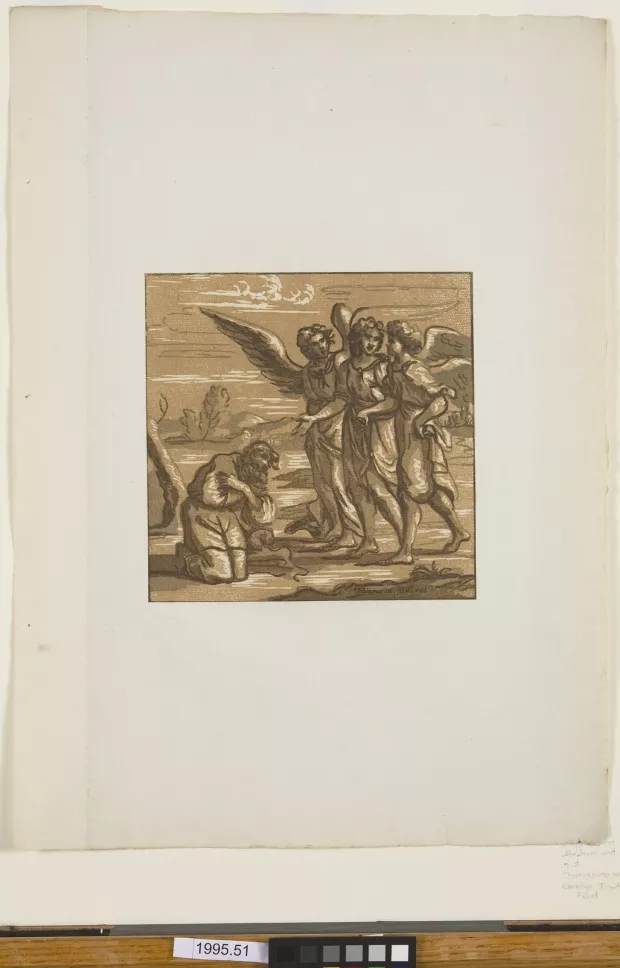Creation Date
1782
Height
19 cm
Width
19 cm
Medium
Genre
Description
John Skippe was better known as a collector than as an artist, and he is generally considered an amateur with regard to both his woodcuts and his later paintings (Burch 78). However, he did introduce an old Italian tradition into the world of Romantic Britain, creating this particular woodcut in the style of Antonio Maria Zanetti. His work shows how Romantic art depended on a long history of sources—of Renaissance artists, their Medieval predecessors, and the ancient authors of the Bible from whom they drew inspiration. Furthermore, this work demonstrates the Romantic interest in the existence of miracles, the question of which emerged out of the debates of such Enlightenment thinkers as Hume. Artists would often look back to a time when miracles were, if not commonplace, at least unchallenged in their reality. As visual technology progressed and viewers' ability to deduce the mechanisms behind spectacles decreased, audiences may have looked back to an older, less rational way of thinking in order to augment the pleasurable suspension of their disbelief (McCalman 187-88).
This woodcut, depicting Abraham's encounter with the three angels, dwells on divine benevolence and Abraham's humility. More generally, the image attests to the Romantic interest in narratives that posited miracles and mythical beings as existing in the real world. Abraham kneels on a flat plain before three winged angels who stand conversing among themselves. Some hills and trees stand in the distance, and the sky is furrowed with thick, wavy lines that suggest clouds and blowing wind.
Copyright
Copyright 2009, Chazen Museum of Art, University of Wisconsin-Madison
Publisher
John Skippe
Collection
Accession Number
1995.51
Additional Information
Bibliography
Burch, R. M., and William Gamble. Colour Printing and Colour Printers. 2nd ed. London: Pitman, 1910. Print.
Harrison, Colin. John Malchair of Oxford: Artist and Musician. Oxford: Ashmolean Museum, 1998. Print.
James, Carlo, et al. Old Master Prints and Drawings: a Guide to Preservation and Conservation. Trans. and ed. Marjorie B. Cohn. Illustrated ed. Amsterdam: Amsterdam UP, 1997. Print.
Manners, Victoria. Matthew William Peters, R.A.: His Life and Work. London: The Connoisseur, 1913. Print.
McCalman, Iain. Sensation & Sensibility: Viewing Gainsborough's Cottage Door. Ed. Ann Bermingham. New Haven: Yale Center for British Art, 2005. Print.
Simpson, William, and Martin Desmond Jones. Europe, 1783-1914. Illustrated and revised ed. New York: Routledge, 2000. Print.

